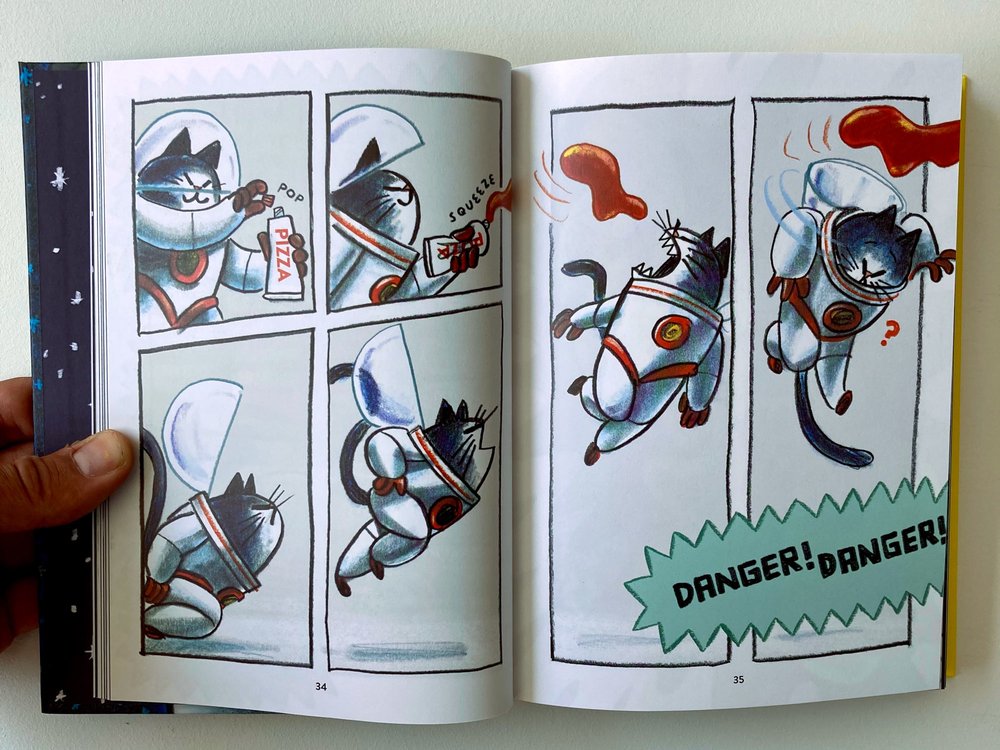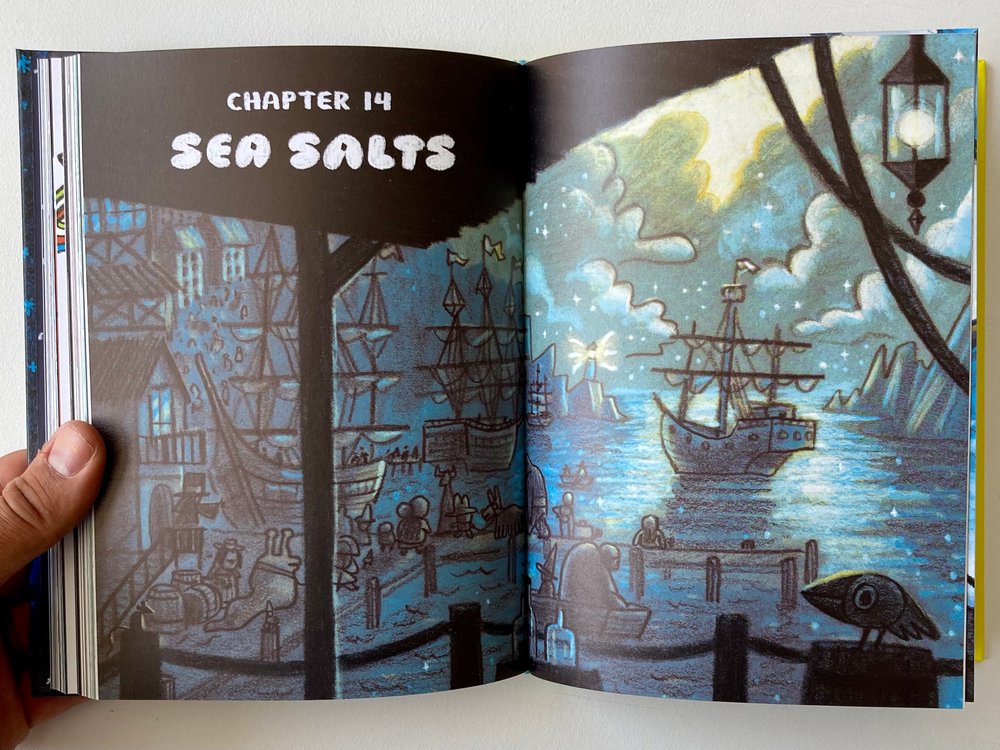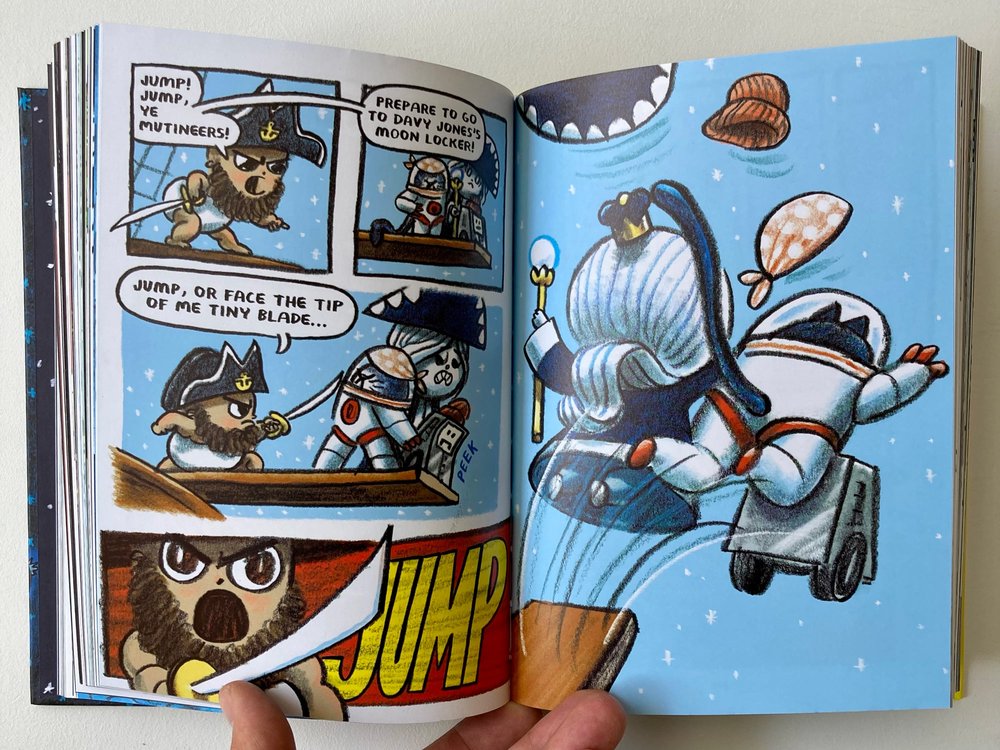Happy New Year! I want to tell you about one of my favourite kids’ books of 2023.
I read kids books for work (I’m part of the bookseller machinery, as Joni Mitchell might say) but really, I’ve always read them and been interested in them. Some are profound, some are playful, some are “interesting”, some make you see the world again like you had a fresh pair of eyes. (Yes, I still feel defensive about it – but I do know that’s ridiculous.)
Fortunately, if you like children’s books, it turns out you can actually be of some use. Nobody really cares what a newspaper critic says about a new book or movie for adults (controversial? But if you care so much, read or see it yourself) but children and their adults do actually need a bit of guidance, for a multitude of reasons. Often, they need reminding of great writers and illustrators of the past. Frequently, you need to bang the drum for brilliant, innovatory, talented new writers and illustrators.
Speaking of which, Mac Barnett and Shawn Harris’s The First Cat in Space Ate Pizza.

It’s told in comic format – and yes, that’s the phrase I’d go for. ‘Graphic novel’ sounds too weighty for this style – it’s as freewheeling as the titular feline as seen on pages 34 and 35, moving acrobatically in zero gravity, his space helmet off and his mouth open, about to eat some pizza-flavoured astronaut food that floats similarly in a tomato-red blob.
Why is the cat in space? Why is the cat in a spacesuit?
As the book explains, this is “Earth’s last hope … with a brain enhanced by microchips .. and a suit upgraded by biotechnology”. He has been sent into space to save the Moon from being eaten by rats from another galaxy.
He is instantly iconic and your fingers itch to draw him: his face a semi-circle, button nose, and everything else done in eight simple strokes of the pen. His only utterance throughout the book, whether posing questions or making profound statements – “Meow”.
Actually, not a pen. This looks like some sort of crayon. Occasionally it gives the pictures a marvellous, shimmery, smudgy beauty – sometimes it has the dynamism of a storyboard. Sometimes, for example in the Peninsular of Thunder, it gives me a vibe of Robert Crumb and the alternative comics of the 60s. It’s a great feeling of something barely restrained, and in fact that’s the keynote of the book: it’s out of control, anything could happen, anybody could say anything. In the Peninsular, our heroes learn, everything is alive (that is, it has huge eyes, talks and cracks jokes – Disney cartoons turned to 11). “All the forest is alive! But not just the trees! The branches on the trees! The leaves on the branches!”
“And even me,” exults a grinning worm on leaf on a branch on a tree, “a worm on leaf on a branch on the tree!”
“I mean,” replies the Queen of the Moon, “everyone already knows worms are alive.”

Yes, I hadn’t mentioned the Queen of the Moon before, and no, that’s not the last we’ve heard of that worm. This is a fabulously populous book, but I don’t want to spoil the twists and turns. In part, it’s because that feeling of being out of control is that of somebody making up a story as they go along. We visit many realms in this book, and there are more in the second book (only just published – and a rare instance of me pre-ordering something to read it as soon as it was released). With each new invention, moment of surprising backstory, twist in the tale, we get a vicarious thrill of invention. Mac Barnett’s wry comic tone – familiar to British readers mostly in collaboration with Jon Klassen in books like Sam and Dave Dig a Hole – is matched by a glorious ‘Nemo in Slumberland’-esque imaginative vitality,
To the extent that it has no moral or deeper meaning, and simply exults in surreally silly storytelling, it recalls the very first great kids’ book, Alice in Wonderland. We’ve heard a few times this year of the decline in children reading for pleasure (or perhaps ‘fun’ is a better way of putting it) – yet we hear much less often about purely pleasurable (and fun) books and reading materials. Alice (a series of ludicrous events with parodies of ‘improving’ features of a Victorian childhood) is one of the few purely fun and amusing books to be given classic status and sold today in fabulous hardback gift editions.
Now, I like a beautiful and disquieting coming of age novel as much as the next guy – and goodness knows they don’t much airtime either – but fun books forge book-lovers, as do the scary or breathless adventures of sci-fi, fantasy and horror genres. We need the very best of these, and we need to be singing their praises.
Without these books, there will be fewer booklovers, but what is worse, the love they have for books would be sort of politely appreciative, distant and kid-gloved. You and I know there is a different kind of book-love, where you want to climb inside that universe and leave a piece of yourself there.
It is with this in mind that I commend The First Cat in Space to you. Because we’re on a mission to spread this kind of book-love. And – just like saving the moon from space rats – you need to give that mission to the experts.

Book 1,The First Cat in Space Ate Pizza is now out in paperback: you can order it from Waterstones here, or at your local independent bookshop (use it or lose it). The second book – The First Cat in Space and the Soup of Doom, featuring bandits, wizards and a character called Dr Lollipops – is out now in hardback. The geniuses behind this book have also created a whole First Cat in Space site with songs from the book, merchandise, and the ‘live cartoons’ project that originated the story during 2020’s lockdown.